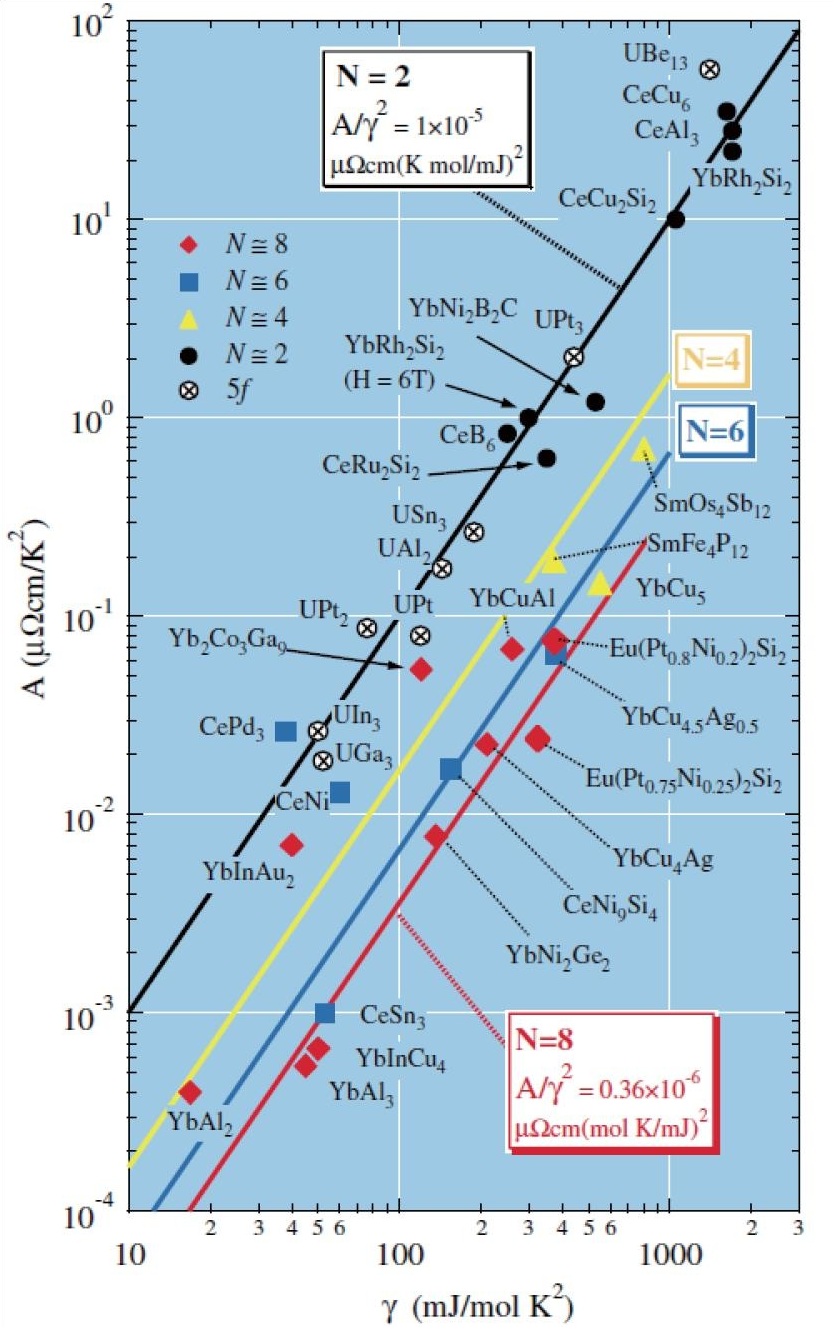Strongly Correlated Electrons
Universal Relation in Heavy Fermion Systems:

Grand Kadowaki-Woods relation for Ce- and
Ub-based heavy fermion compounds (N=2~8).
Strongly correlated metals composed of 4f and 5f elements are called the heavy fermions systems, because the effective electron mass is drastically enlarged (m*/me=100~1000) due to the strong Coulomb interaction of f-electrons. In these systems, the specific heat and the resistivity follows the Fermi liquid relations C = γT and ρ = AT2. In addition, in may Ce-based compounds, empirical universal relation A/γ2 ~ a0 = 1×10-5μΩcm(K mol/mJ)2 holds, known as Kadowaki-Woods relation. However, strong violation of this “universal relation” has been reported recently in various heavy fermions, especially Yb-based compounds. This finding casted a serious and fundamental question on the ground state of heavy fermion systems.
In many heavy fermion systems, the Kondo temperature TK can be larger than the crystalline electric field (CEF). In this case, the degeneracy N becomes as large as 6 (J=5/2 in Ce) and 8 (J=7/2 in Yb). Based on the microscopic Fermi liquid theory, we derived the “ground Kadowaki-Woods relation A/γ2 ~ 2a0/N(N+1)” [26]. Original Kadowaki-Woods relation is satisdied when N=2 (Kramers douoblet case). Figure shows the KW ratio of various heavy-fermion compounds with N=2~8. Since various compounds with N>2 has been discovered now, the ground Kadowaki-Woods relation is the universal relation of heavy fermion systems.
[1] H. Kontani, J. Phys. Soc. Jpn. 73, 515 (2004). (Editor’s choice)
[2] N. Tsujii, H. Kontani and K. Yoshimura, Phys. Rev. Lett. 94, 057201 (2005).
